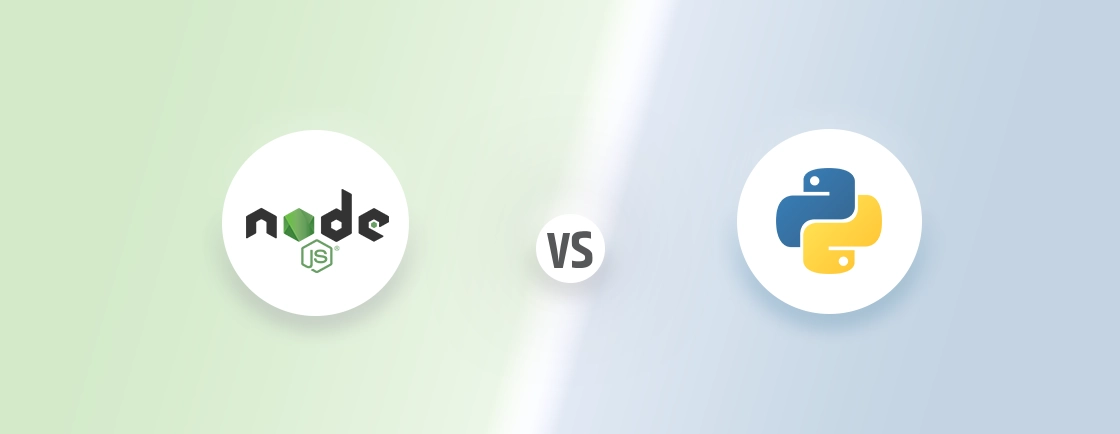Quick Summary
PHP developers often wonder whether to use weak typing or strict typing. Weak typing offers flexibility and quick results, while strict typing enforces precision and reduces bugs. This blog breaks down the differences, pros, and cons of each approach with practical examples, helping you decide when to use each one. Gain insights to write PHP code that is reliable, readable, and maintainable, no matter the project size.
Table of Contents
In programming, “typing” refers to how a language handles data types. Every piece of data, including a number, text, or boolean, has a type. How strictly a language enforces these types can change how you write and run your code.
Understanding types is essential in PHP. It affects how your code behaves, its safety from bugs, and its ease of maintenance. PHP has always been known for its flexibility, but that flexibility comes with trade-offs. Mistakes with data types can lead to unexpected results that are hard to debug.
This is where the concepts of weak typing and strict typing come into play. Weak typing allows PHP to convert data types when needed automatically. Strict typing, on the other hand, enforces rules and expects the right type to be used. Knowing the difference can have a significant impact on the reliability of your code.
In this blog, we compare strict typing vs weak typing in detail, look at their strengths and weaknesses, and help you understand when to use each. So, let’s start.
What is Weak Typing in PHP?
By default, PHP is a weakly typed language. This means it does not enforce strict rules about data types. In simple terms, PHP often guesses what kind of data you are working with and converts it automatically when needed.
For example, consider this code:
$number = 5;
$text = "10";
$result = $number + $text;
echo $result; // Output: 15
Here, PHP automatically converts the string “10” into a number before adding it to $number. This is weak typing in action. The language makes things easier by doing the conversion for you.
Pros of Weak Typing
- Flexible coding: You don’t have to declare types all the time.
- More manageable for beginners: New developers can write code without worrying too much about strict rules.
- Faster prototyping: You can test ideas quickly without worrying about typos.
Cons of Weak Typing
- Unexpected results: Automatic conversions can sometimes produce surprising outcomes.
- Harder to debug: Bugs related to type juggling can be tricky to track.
- Less predictable code: When working on large projects, weak typing can make the code less reliable.
Weak typing is convenient, but it comes with risks. To write safer, more predictable PHP code, it is essential to be aware of these risks.
What is Strict Typing in PHP?
Strict typing is the opposite of weak typing. When you use strict typing, PHP expects the exact data type you specify. It will not automatically guess or convert types. This makes your code more predictable and safer.
To enable strict typing in PHP, you add this line at the top of your file:
<?php
declare(strict_types=1);
Once strict typing is enabled, PHP enforces type rules. For example:
<?php
declare(strict_types=1);
function addNumbers(int $a, int $b) {
return $a + $b;
}
echo addNumbers(5, "10"); // This will cause a TypeError
In this example, PHP will throw an error because the second argument is a string, not an integer. Unlike weak typing, it will not try to convert “10” into a number.
Pros of Strict Typing
- Safer code: You catch type-related errors early.
- Fewer bugs: Predictable type behavior reduces unexpected results.
- Easier maintenance: Other developers (or your future self) can understand the code more clearly.
Cons of Strict Typing
- Less flexible: You must always provide the exact type.
- More upfront work: You need to think carefully about types when writing functions.
- Slower prototyping: Quick experiments can be more complex since type rules are strict.
Strict typing brings structure and reliability. While it may feel rigid at first, it ultimately pays off, especially for larger projects or teams. Need expert PHP solutions? Partner with a professional PHP development company to build reliable, maintainable, and bug-free applications.
Weak Typing vs Strict Typing: Quick Comparison Table
Let’s do a quick weak typing vs strict typing comparison to understand the differences.
| Aspect | Weak Typing | Strict Typing |
|---|---|---|
| Type Conversion | PHP automatically converts types when needed. | PHP enforces exact types; no automatic conversion. |
| Error Handling | May produce unexpected results; errors often appear at runtime. | Type errors are caught immediately, making code safer. |
| Flexibility | Very flexible; easy to mix types. | Less flexible; types must match exactly. |
| Readability & Maintenance | Code can be harder to read in large projects due to implicit conversions. | Clear type definitions make code easier to read and maintain. |
| Debugging | Bugs related to types can be tricky and hidden. | Errors are predictable, making debugging faster. |
| Performance | Minor overhead due to type juggling at runtime. | Slightly better performance because types are fixed. |
| Learning Curve | Easier for beginners to start coding without worrying about types. | Steeper learning curve, but encourages disciplined coding. |
Weak Typing vs Strict Typing: Key Differences in Detail
Understanding the differences between weak and strict typing is crucial for writing more effective PHP code. Let’s break it down point by point.
1. Type Enforcement
How strictly a language enforces data types in your code.
- Weak Typing: PHP automatically converts values between types when needed. This allows adding strings and numbers together without errors. It’s flexible, but you can’t always predict the results.
- Strict Typing: PHP expects the exact data type you declare. Passing the wrong type will immediately throw an error, preventing accidental type mismatches.
Verdict: Strict typing wins for safety and predictability, while weak typing offers more flexibility but is less reliable.
2. Error Handling
How the language responds to type-related mistakes in your code.
- Weak Typing: PHP allows code with type mismatches to run, potentially producing unexpected results. Errors often appear only at runtime, making debugging tricky.
- Strict Typing: PHP immediately throws an error when a type mismatch occurs. This makes issues clear and helps prevent hidden bugs from affecting your program.
Verdict: Strict typing is superior for catching errors early, while weak typing can lead to unpredictable results and delayed debugging.
3. Flexibility
How easily the language lets you work with different data types together.
- Weak Typing: PHP allows you to freely mix types, such as combining strings and numbers without restrictions. This makes coding quick and convenient, especially for small projects or experiments.
- Strict Typing: PHP enforces strict rules, so every value must match the declared type. This reduces freedom but keeps your code consistent and predictable.
Verdict: Weak typing wins for speed and experimentation, while strict typing is better when you need structure and consistency in larger projects.
4. Ease of Use for Beginners
How simple it is for new developers to start coding.
- Weak Typing: PHP’s weak typing lets beginners write code without worrying too much about data types. It feels forgiving and allows quick results, which can build confidence early on.
- Strict Typing: With strict typing, beginners must learn to declare and manage types from the start. This can feel rigid at first, but it teaches good habits and clearer thinking about data.
Verdict: Weak typing is more manageable for absolute beginners, while strict typing is better for those aiming to build a strong coding discipline.
5. Code Reliability & Safety
How dependable and secure the code is when handling data types.
- Weak Typing: Automatic conversions can make code unpredictable. Small mistakes with types may not break the program, but can lead to subtle bugs that are hard to trace.
- Strict Typing: By enforcing exact types, strict typing reduces hidden errors. It creates safer, more predictable code that behaves consistently across different scenarios.
Verdict: Strict typing is the clear winner in terms of reliability and safety, especially in larger or critical applications.
6. Maintenance & Readability
How easy is the code to understand and manage over time?
- Weak Typing: Implicit type conversions can make the code less clear. In large projects, it can be challenging for developers to determine the expected types, which slows down maintenance.
- Strict Typing: Clear type declarations improve readability. Developers can quickly identify the required types, making the codebase more straightforward to manage and update safely.
Verdict: Strict typing is better for long-term maintenance and team projects, while weak typing may lead to confusion as the code grows.
7. Performance
How efficiently the code runs in terms of speed and resource use.
- Weak Typing: PHP requires runtime type juggling, which incurs a slight overhead. For most scripts, this difference is barely noticeable; however, it can be significant in very large or intensive applications.
- Strict Typing: Since types are enforced, PHP skips the extra conversions. This can make execution slightly faster and more consistent, especially in performance-critical code.
Verdict: Strict typing has a slight edge in performance, though for small projects the difference is often negligible.
9. Debugging Complexity
How easy it is to find and fix type-related issues in the code.
- Weak Typing: Type-related bugs can be hard to spot. Since PHP automatically converts types, errors may only appear in specific scenarios, making debugging particularly challenging.
- Strict Typing: By catching type errors immediately, strict typing supports cleaner code and aligns with PHP security best practices. This makes it easier to identify problems early and resolve them before they escalate into larger issues.
Verdict: Strict typing simplifies debugging, while weak typing can lead to hidden and harder-to-trace bugs.
Simply put, weak typing in PHP offers flexibility, easier learning, and faster prototyping, but can lead to unpredictable results, hidden bugs, and harder maintenance. Strict typing enforces exact types, improving safety, reliability, readability, and debugging, making it ideal for larger or critical projects.
When to Use Weak vs Strict Typing
Choosing between weak and strict typing can impact how PHP is used in web development, especially in large applications versus quick scripts. Each approach has scenarios where it shines.
When to Use Weak Typing
- Small scripts: Quick tasks or simple automation scripts benefit from weak typing. You can write fast without worrying about strict type rules.
- Prototypes: If you’re testing ideas or building a proof of concept, weak typing lets you experiment freely and make changes quickly.
- Learning or experimenting: Beginners can focus on logic and flow without being blocked by type rules.
When to Use Strict Typing
- Large projects: In big applications, strict typing keeps the code predictable and prevents subtle bugs from spreading.
- Team projects: Clear type rules make it easier for multiple developers to understand and maintain the code.
- APIs and critical systems: When reliability and safety are essential, strict typing ensures data behaves exactly as expected.
The key takeaway is to use weak typing for speed, flexibility, and learning. Choose strict typing when safety, reliability, and long-term maintenance are priorities.
Strict Typing vs Weak Typing: Summarizing the Differences
Weak typing and strict typing each have their strengths and trade-offs. Weak typing gives flexibility, speed, and ease of use, making it ideal for small scripts, prototypes, or beginners exploring PHP. Strict typing enforces clear rules, improves reliability, reduces bugs, and makes large projects or team-based work more manageable.
The best way to truly understand the difference is to experiment with both. Experimenting with weak and strict typing helps you understand what PHP is used for and how to write code that’s both flexible and reliable.
Try a small script with weak typing, then enable strict typing and observe the behavior. This hands-on approach allows you to appreciate the strengths of each method and select the most suitable approach for your projects. Want to build reliable PHP applications? Hire PHP developers who know when to use weak or strict typing to write clean, bug-free code.
FAQs on Strict Typing vs Weak Typing
How do I enable strict typing in PHP?
You can enable strict typing by adding declare(strict_types=1); at the top of your PHP file. Once enabled, PHP enforces the exact types declared in function arguments and return values. Passing the wrong type will cause an error to be thrown immediately.
Can weak typing cause problems?
Yes, weak typing can sometimes lead to unexpected results. Since PHP automatically converts types, subtle bugs may appear that are hard to detect, especially in large projects or when combining different data types.
When should I use weak typing?
Weak typing works best for small scripts, quick prototypes, or learning projects. It allows flexibility and speed, making it easy to experiment without worrying about strict type rules.
When should I use strict typing?
Strict typing is ideal for large applications, APIs, or team projects where reliability matters. It reduces hidden bugs, improves readability, and ensures your code behaves predictably.
Does strict typing make PHP slower?
Strict typing adds minimal overhead, but in most cases, the difference is negligible. In fact, it can sometimes improve performance slightly since PHP doesn’t need to perform automatic type conversions.
Can I mix weak and strict typing in PHP?
Yes, but only on a per-file basis. You enable strict typing at the top of each PHP file. Files without declare(strict_types=1); will use weak typing, so you can mix approaches across your project if needed.
Code Smarter, Build Faster
We help you implement the best coding practices for safer, efficient, and scalable websites and web apps.




